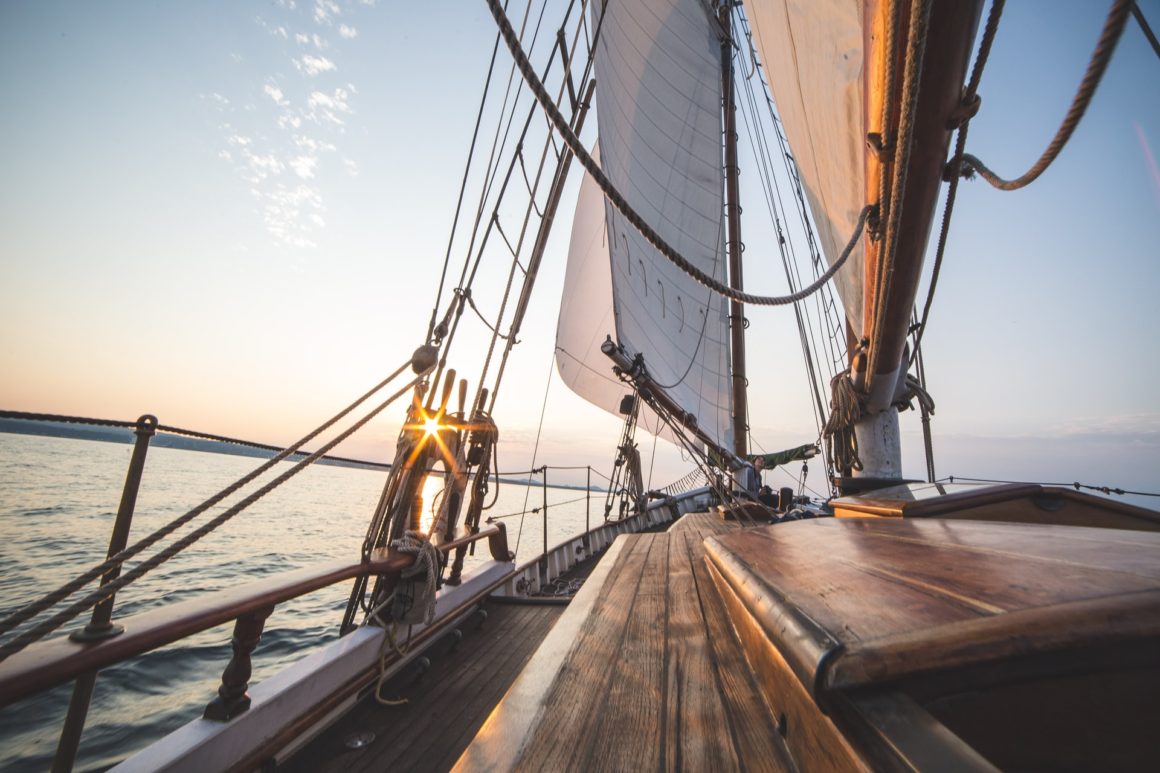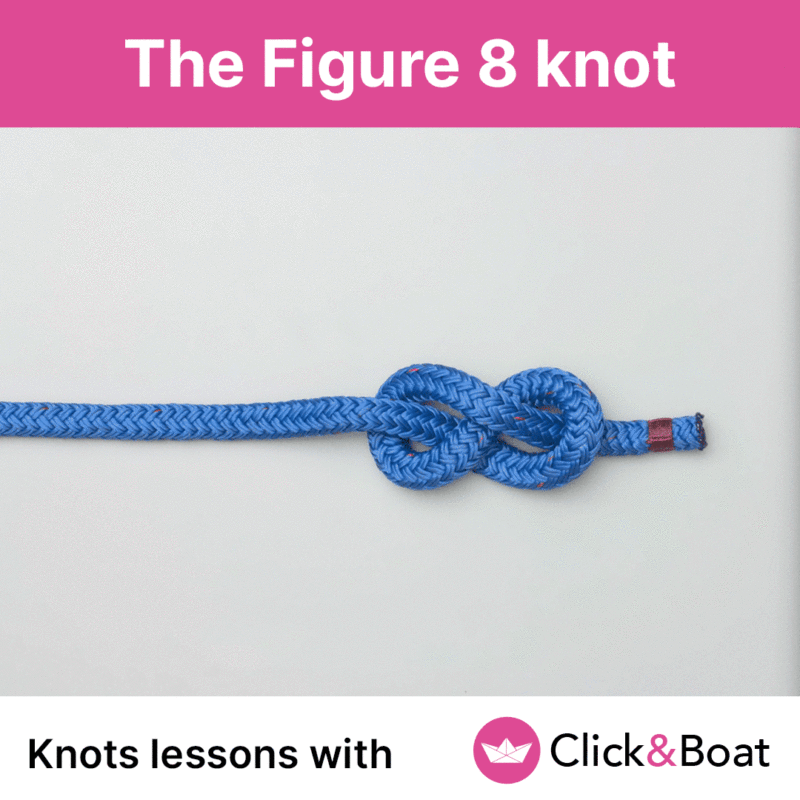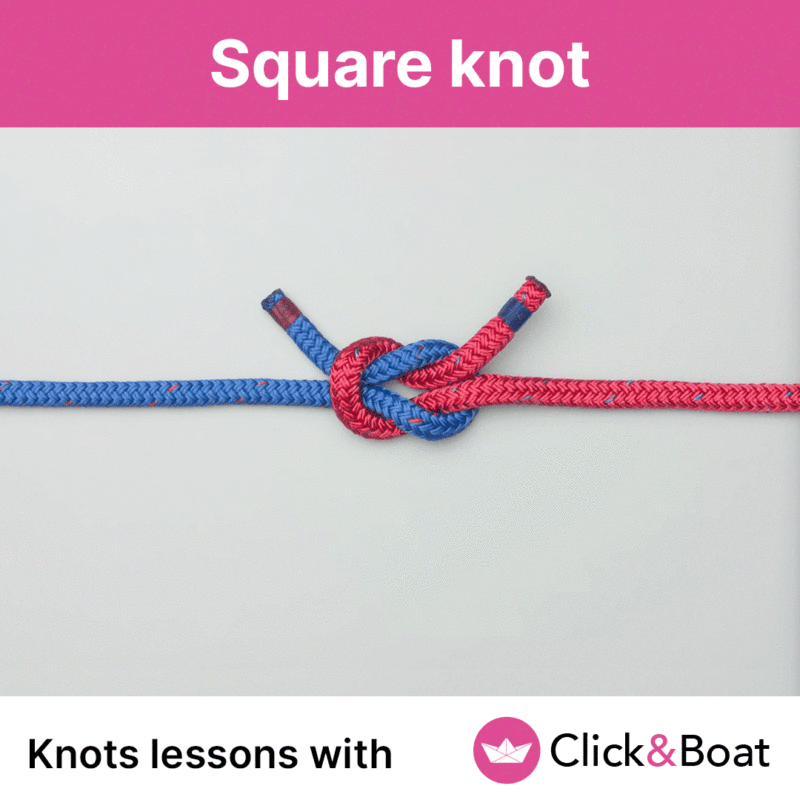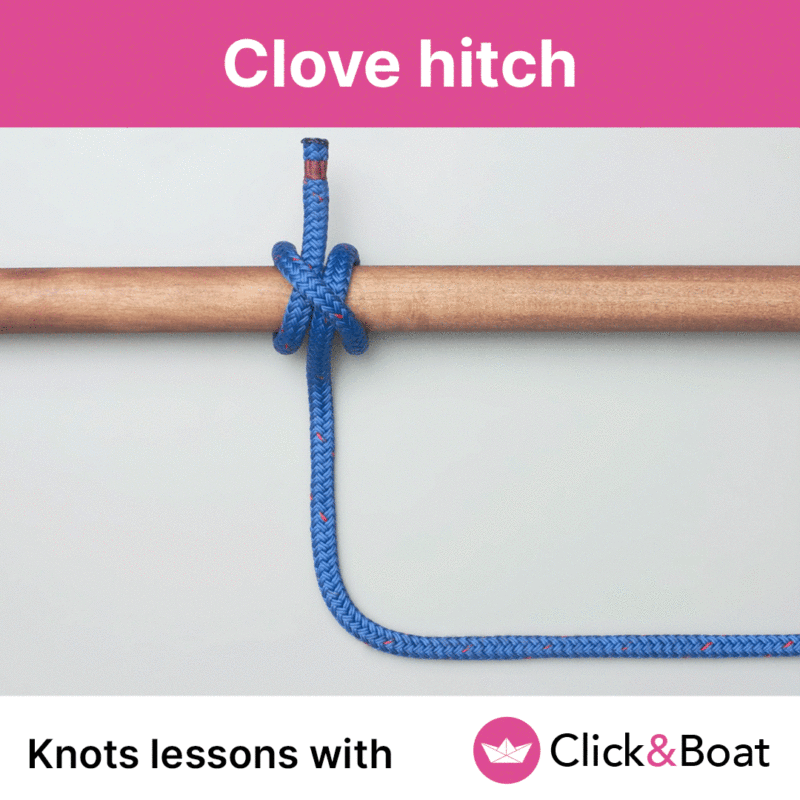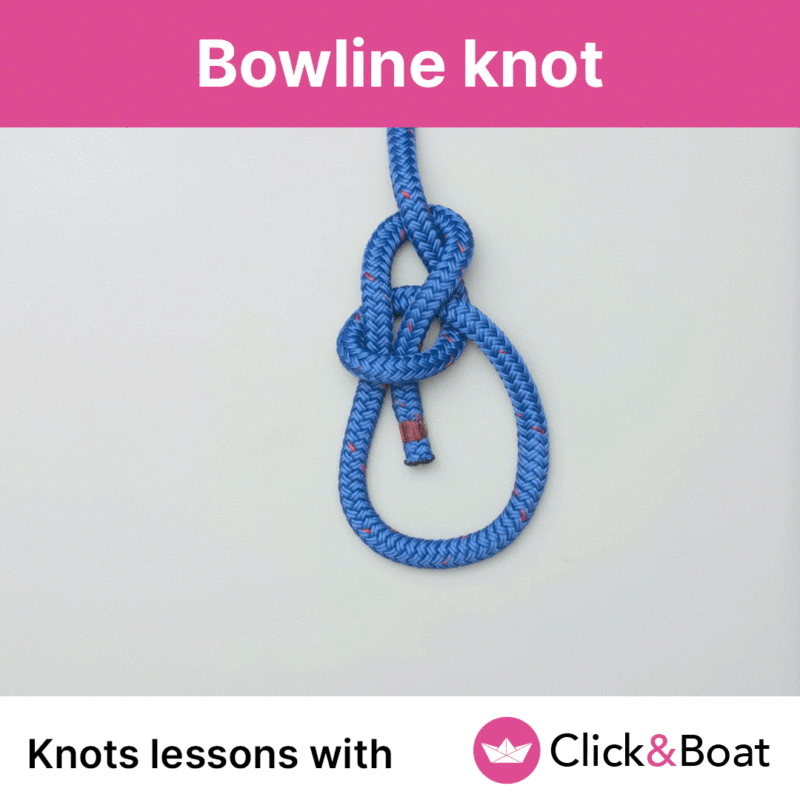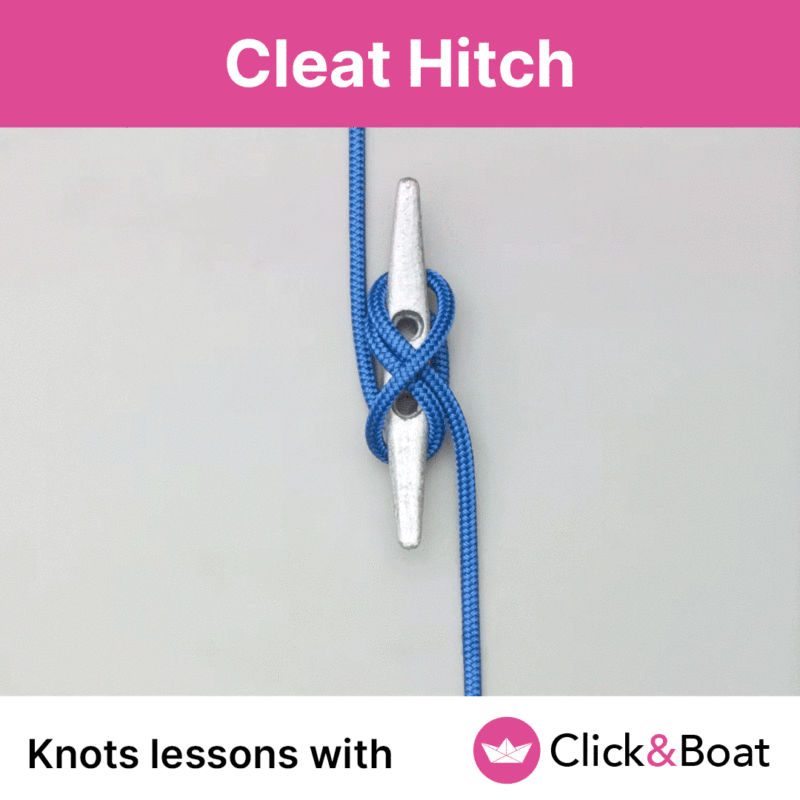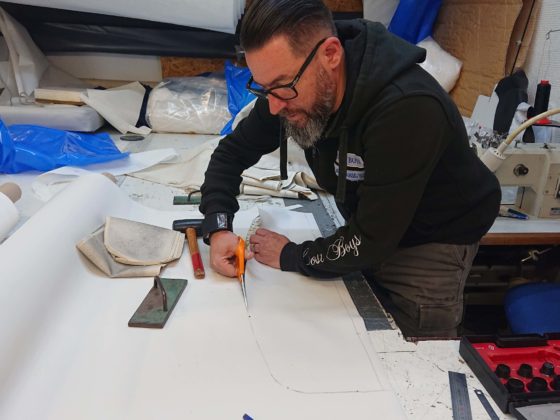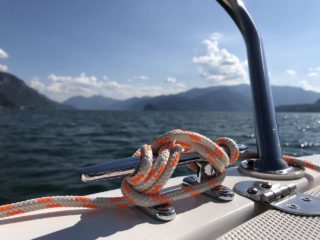Share the post "Hitched: Five Essential Sailing Knots for Your Next Boat Trip"
Sailing knots tend to be a riddle – we have all heard of them, but few people master the art. And yet, this is an important nautical skill that will make your life easier, particularly if you opt for a bareboat yacht charter. It’s good to know how to tie a reliable knot, as you never know what conditions you might encounter on your sailing trip.
Overall, a good hitch should have the following properties:
- can be tied quickly
- endures extreme pressure
- can be undone easily
We are avid sailors here at Click&Boat, and we are always happy to help novices learn the ropes. So get a rope, or just a gift ribbon, and get started!
Figure-of-Eight Knot
The figure-of-eight-knot, is a very simple hitch that you have probably already used, albeit unconsciously. It is a stopper knot that resembles the number eight. It’s mainly used to prevent ropes and cables from running out of retaining devices. Indeed, the knot prevents ropes from sliding through eyelets, flattening sheets or traps. This knot thus ensures that the sail is always well moored when the winds are strong.
Thanks to its relatively simple form, it can always be easily undone, even after heavy pressure. This is particularly important on a boat because the wind and the waves put immense pressure on the ropes. The next step is to use this knot to tie two ropes.
Square Knot
Similar to the eight knot, the square or cross knot is not only useful for sailors. However, it’s useful and can be used in everyday life. It is the perfect choice to tie together two equally thick ropes. This is particularly handy if a rope is not long enough, or to tie the reefed sail to the boom. In case the rope rips apart, you can put it back together with a cross knot. Another option could be a more complicated hitch like the sheet bend.
The cross knot is not to be confused with the Indian knot or the thief knot. They are all very similar, but a cross knot is much stronger. You only need just one rope to tie a cross knot. Take the two ends of the rope and tie them according to the instructions.
Clove Hitch
If you charter a yacht, you will often use the weaving stitch, especially in the evening when you dock. This knot is used to attach the fenders to the railing. The fenders protect your own boat and others’ by preventing a collision. This knot is always tied around railings or the bathing ladder, so it is mainly used to fasten something.
A particular advantage is that it is possible to undo it under pressure, but it can also be tied easily. This is very useful when it’s windy and you have to act quickly.
Bowline Knot
The bowline knot is essential for every sailor and is one of the most widely used sailing knots. In principle, this knot is a loop that does not tighten when pressed. The bowline is incredibly flexible and can be used in any situation. Above all, it is useful to moor your boat. The bow in the form of a loop is ideal to fasten the boat to bollards and cleats.
Unlike the aforementioned sailing knots, the bowline is a little trickier and brings some sailing novices to despair. Here’s a mnemonic device to help you master this knot: make a “pond” with your rope, imagine the end of the rope is a snake and the rest of the rope on the other side of the pond is a tree. The snake comes out of the pond, winds around the tree around and then dives back into the pond. Simultaneously pull the tree on one side and the snake and the lake on the other, and voilà! You have a bowline!
Cleat Hitch
Just like the clove hitch, the cleat hitch is particularly important when you are mooring in a port with ropes, and you are using cleats. It is essential for a yacht charter for every mooring manoeuvre. Check out these mooring spots in Greece!
A special thank you to Animated Knots, for their great knot GIFs!

